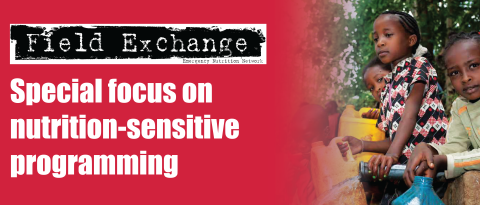Programming implications of stunting in protracted emergency contexts
The objectives of nutrition sensitive programming are most often framed in terms of reducing levels of stunting. Funded by Irish Aid, ENN recently undertook a scoping exercise to explore the implications of operating in situations of protracted crisis where wasting prevalence may not trigger emergency nutrition interventions but levels of stunting are high. The exercise involved document review and informal discussions with nutrition focal points in a number of agencies (donor, United Nations) and non-governmental organisations. The brief report summarises key quantitative data (see Box 1), the funding context, the extent of monitoring stunting levels in protracted crisis, what we are doing about stunting in programming terms, and what could or should we be doing about it (see Box 2).
Box 1: Figures on stunting in fragile and conflicted affected states (FCAS)*
- 55% of the countries have Serious or Critical levels of stunting
- Only 4 of the countries have Acceptable levels of stunting (and of these 2 are out of date)
- Total stunted children in the world (WHO/UNICEF/WB 2015) = 23.8%, 158,600,000 children
- Therefore an estimated 45% of the total stunted children in the world live in fragile and conflict affected states
- The 2030 Global target is to reduce the number of stunted children in the world to 86 million
- Severe stunting is over 15% in 26/54 – nearly half of the countries
* Note that FCAS are taken as a very rough proxy of countries experiencing protracted crises.
Box 2: Ten evidence based interventions for stunting reduction
- Salt iodisation
- Multiple micronutrient supplementation in pregnancy (includes iron-folate)
- Calcium supplementation in pregnancy
- Energy-protein supplementation in pregnancy
- Vitamin A supplementation in childhood
- Zinc supplementation in childhood
- Breastfeeding promotion
- Complementary feeding education
- Complementary food supplementation
- (Management of SAM – included in the Lancet 10 interventions for its impact on mortality)
The investigation raised more questions that can currently be answered; recommended next steps are to:
- Conduct further roundtable discussion with agencies working in nutrition and related sectors, including clusters and sector coordination bodies in FCAS, to further explore the issues raised.
- Investigate opportunities to improve monitoring of both wasting and stunting levels in protracted crises – including better understanding of sub-national trends, incidence and seasonality.
- Keep attention focused on the extent to which our response in protracted crisis supports the nutritional needs of all individuals (including those with increased needs) based on knowledge of requirements, assessment of needs and the principle of the right to adequate food.
- Monitor the extent to which the Lancet specific interventions are being scaled up in FCAS contexts and explore the relationship between intervention coverage and trends in stunting.
- Continue to advocate and propose interventions for longer term funding in protracted crisis.
- Advocate for greater adherence to common monitoring frameworks for nutrition particularly in protracted crisis which will allow results (including impact on stunting) to be tracked over the long term, including during periods of more acute crisis.
A print copy of the review is included with this edition of Field Exchange. It is also available online here.


